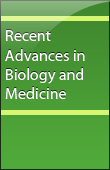


Histopathological studies of the effects of chloroform and methanolic leaf extracts of Ilex kudingcha in Trypanosoma brucei infected albino wistar rats were investigated. The toxicity and phytochemical study were also carried out using standard protocol. T. brucei infected animals were administered orally with 200 and 400 mg/kg b.w. of the extracts and 3.5 mg/kg b.w. of the standard drug (diminazene aceturate). Results on acute toxicity studies (LD50) revealed no sign of lethality up to the dose of 5,000 mg/kg body weight but the liver and kidney histology of infected animals treated with 5,000 mg/kg b.w. of I. kudingcha extracts were observed to be hepatotoxic and nephrotoxic. The methanol extracts showed appreciably high in vivo anti-trypanosomal activities compared to the reference drug. Histological examination of the organs revealed serious pathological lesions in the liver of the infected animals without treatment (negative control). In the positive control animals (infected animals administered standard drug), mild multifocal aggregate of inflammatory leucocytes was observed. In the other experimental animals, no pathological lesion was observed in the liver, kidney, brain, and heart of infected animals treated with the methanolic extract and combined methanol and chloroform extracts. The effectiveness of the methanolic extract at reducing the lesions caused by the parasite is the same compared with the standard drug. Phytochemical analysis of the plant extracts showed that methanol extract contained appreciable high levels of alkaloids, saponin, tannins, phenol, and glycoside while flavonoid was not detected. Hence, the curative properties of methanolic extract of I. kudingcha as observed in the organs indicate its anti-trypanosomal properties but it should be consumed at minimal doses.
Read Article